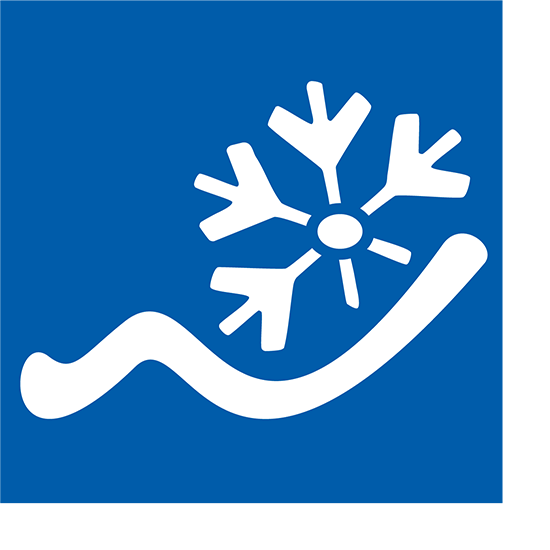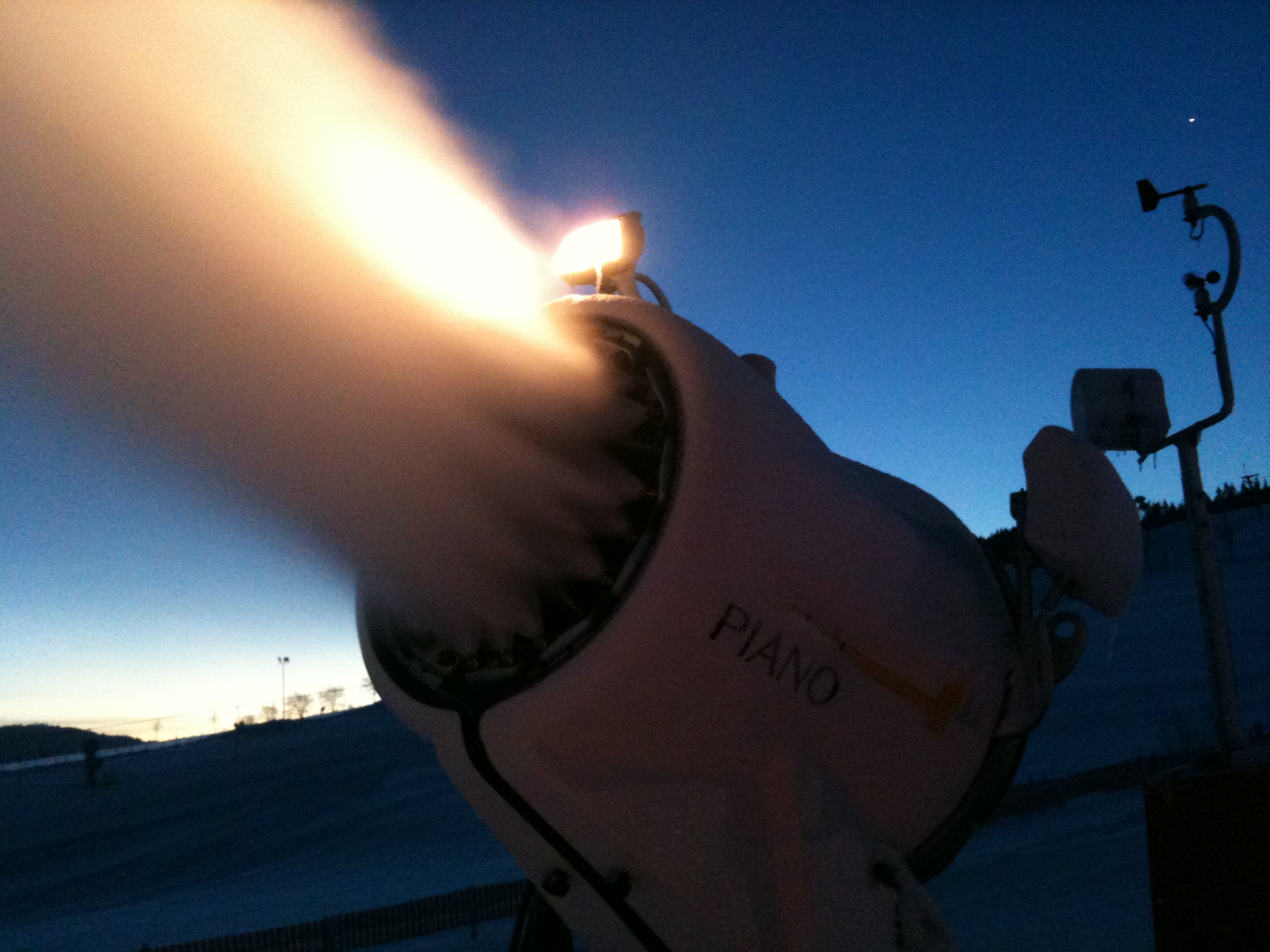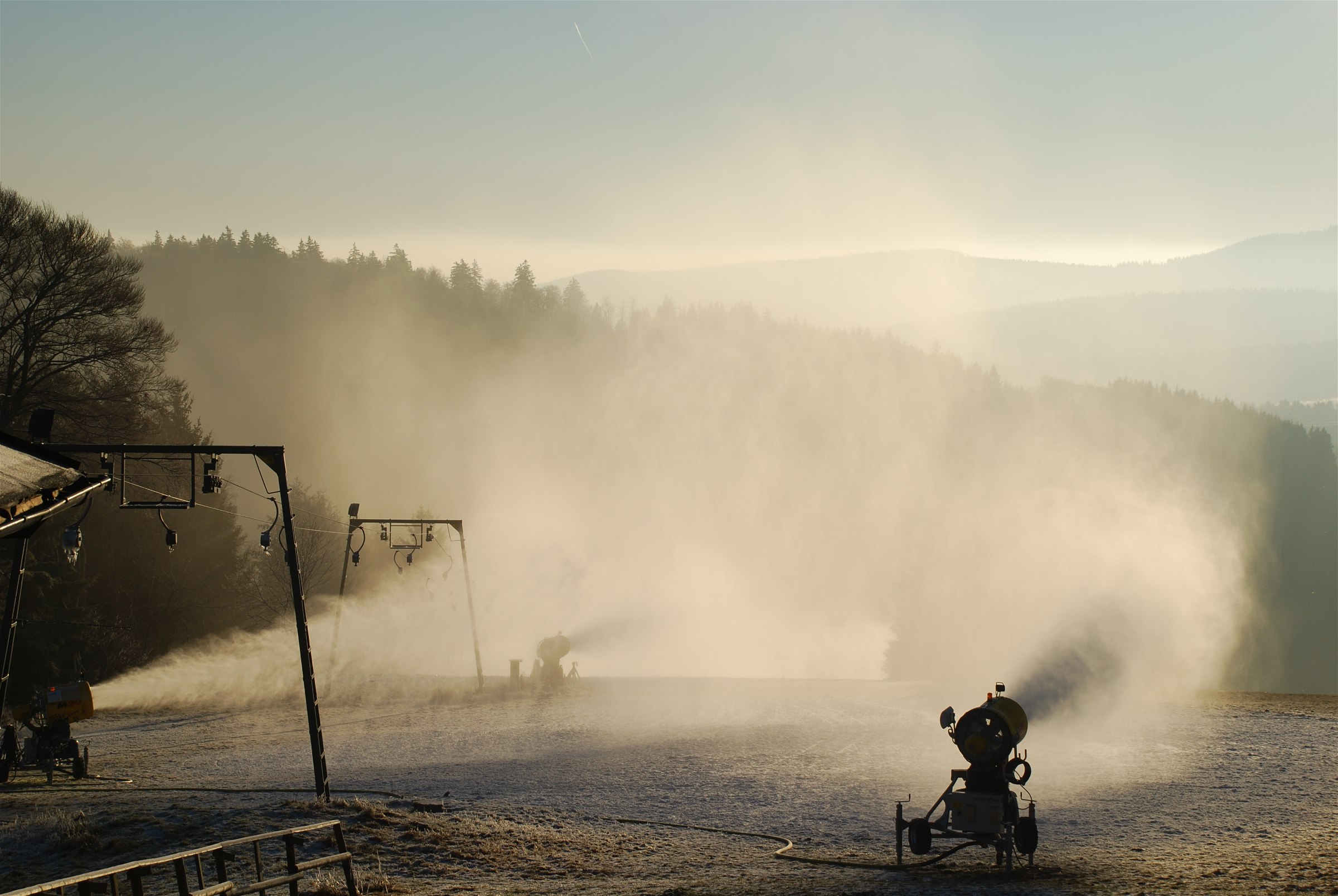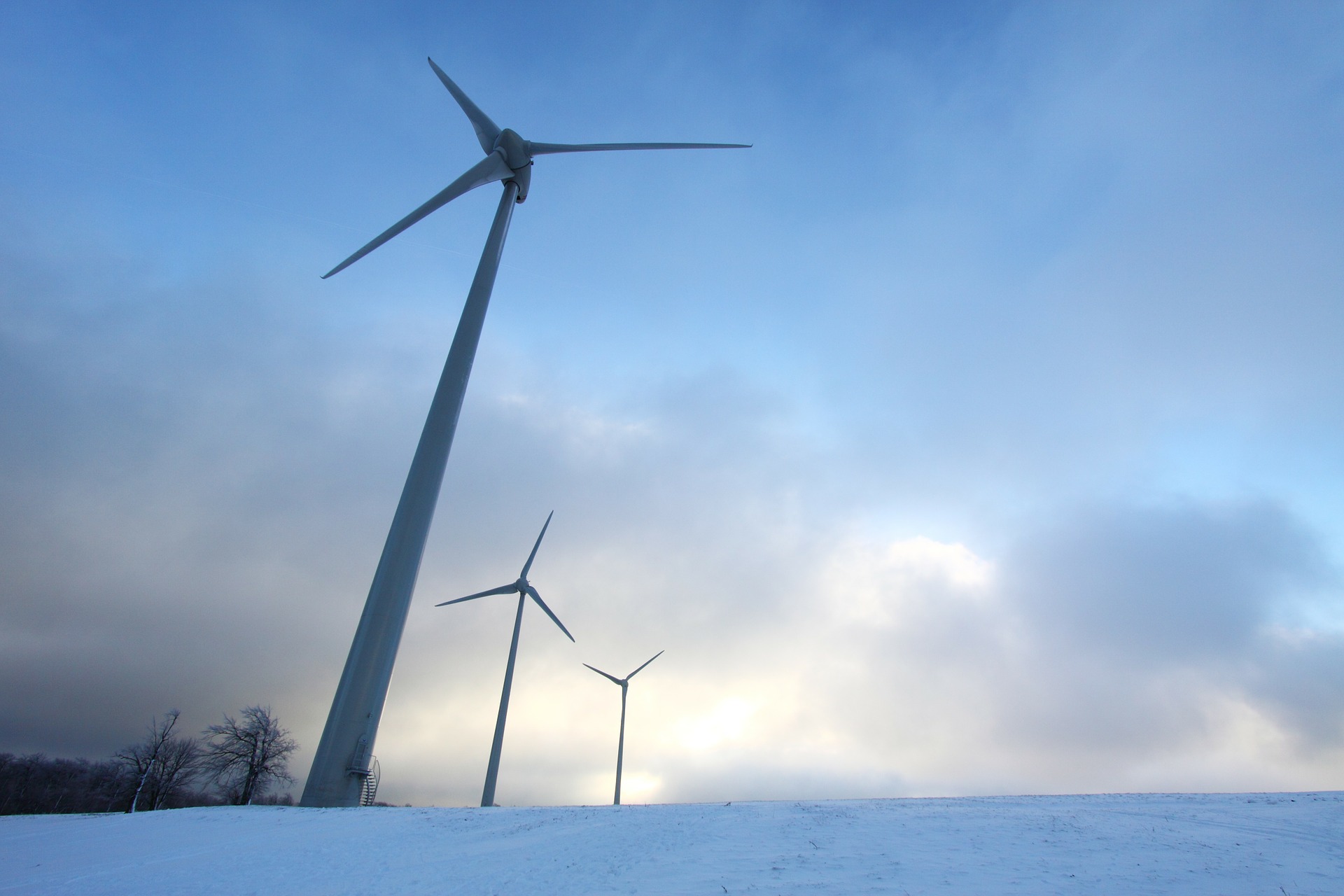
How has snowmaking developed?
Development came to Germany from the USA
The snow cannon was invented in Canada in the 1940s, more or less by chance in the course of aircraft research. It was not until the 1960s that the potential benefits of what was then a rather annoying side effect were recognized. The first high-pressure propeller-driven snow machines appeared in the USA.
The German inventor Fritz Jakob brought the principle to Europe, more precisely to Lake Ammersee, and experimented further. In 1964, the German company Linde finally launched its further development on the market. To this day, the majority of snow guns work according to this principle of fine water atomization using a propeller gun.
A complete snowmaking system based on a snow lance system was first reported in the USA in the 1970s.

Initially for repairing gaps
Snowmaking was expensive and not very efficient. At that time, temperatures of minus five degrees were still required to produce snow of a decent quality. However, technical development progressed rapidly. The experience of the low snowfall in the 1990s prompted the Sauerland Winter Sports Arena to secure winter sports with large-scale snowmaking concepts - the basis of the Winter Sports Arena master plan. This funding concept is still considered one of the most successful of the state government. This is demonstrated by the relationship between the funding and the subsequent investments.

First tests in the winter sports arena in the 1960s
Thefirst tests of artificial snow production were also carried out in the Sauerland winter sports arena at the end of the 1960s, followed by further trials in the 1980s. However, these were still self-built systems that were not very successful and are in no way comparable to those of today.
Thefirst successful attempt to produce snow is known from the Hesselbach glacier ski area. After many unsuccessful tests, the ski club produced snow in the night of January 7-8, 1987 with a self-built high-pressure snow cannon. The Hohe Lied ski area purchased a snow cannon for the winter of 1989.
In the 1990s, other lift operators gained their first experience with mass-produced snow guns. The first successful snow production with mass-produced snow cannons was carried out by the Willingen Ski Club in 1991 on the Mühlenkopf ski jump. In the winter of 1994/1995, a snow gun was installed for the first time in the Ruhrquelle ski area and thus on a ski slope used by tourists. Due to their significantly lower efficiency at the time, they were initially only used to make snow on lift tracks or in places with very thin snow cover.
At the beginning of the millennium, initiated by the Winter Sports Arena Master Plan, snowmaking using high-performance snowmaking systems began on a larger scale with the 2002 pilot project in Neuastenberg, which proved that skiing with the support of technical snowmaking is possible on an economic basis not only in the Alps, but also in the low mountain ranges. The Winter Sports Arena master plan initiated a development towards the most important winter sports region north of the Alps.
Devices have become more powerful and efficient
In the Sauerland winter sports arena, there are mainly snow lancesand low-pressure snow propellers. These have become increasingly efficient and energy-saving over the years. In 2023, for example, twice as much snow can be produced with the same amount of energy as in 2000.
The temperature limit has also continuously shifted upwards. Whereas at the beginning of the century it was still -3 degrees, by 2023 it was already possible to produce snow efficiently at -1.5 degrees with correspondingly cold water.
Another technical development took its course in 2015. The Ruhrquelle ski resort successfully deployed a flake ice system that can produce snow regardless of the outside temperature. Using cooling technology, the water is cooled to freezing point in an efficient heat exchanger. A scraper removes it in wafer-thin flakes of ice, which are distributed over the slope to produce a kind of firn snow.
The system is now located in the Winterberg ski lift carousel on the Poppenberg. It is not used for comprehensive snowmaking, but for targeted, selective use, for example around the Snowboard World Cup. Other systems are also located on the Poppenberg, in the Rauhen Busch and on the Schneewittchenhang bridge.



